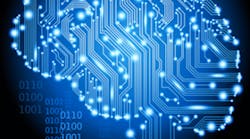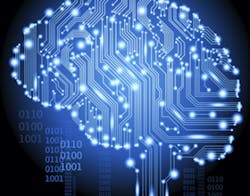In a tragic turn of events this past June, a robot at a Volkswagen plant in Baunatal, Germany, crushed a worker to death. Even though the actions were seemingly due to human error, indirectly it may portend the future of humans and machines.
It’s not that the problem is one of machines killing people, it’s machines killing jobs. The growing use of robots and automation, some alarmists say, is widening the gap between rich and poor and opening the door to massive unemployment.
According to Martin Ford, author of Rise of the Robots: Technology and the Threat of a Jobless Future, society is now at a point where robotics, if not managed right, may trigger economic collapse.
One culprit is machine learning, the process by which a computer improves its own capabilities. Machines are already better than humans at tasks like recognizing objects, and order-of-magnitude improvements happen regularly. Networking with other computers makes the advantages even more pronounced.
Thanks to machine learning, the list of jobs robots can’t perform is shrinking. For instance, experts note that about 4 million workers in the U.S. drive vehicles for a living. The introduction of self-driving vehicles could very well mean their services will no longer be valued or needed. The same holds for doomed professions ranging from number-crunching accountants to burger flippers and farm workers.
Ford predicts 75% unemployment by the end of the century. The vast majority of people do routine work, he says, and eventually that work won't be done by humans. Making matters worse, there just aren’t enough high-pay, high-skill jobs, no matter how we’re educating people.
It’s a doomsday scenario where technology is changing too rapidly for our economy or society to adapt. In the long run, companies eliminate workers, wages and employment drop, demand falls, deflation runs rampant, and the Great Depression looks like a picnic.
Others, like Scott Winship, a fellow at the Manhattan Institute, say hogwash. Humans have coped successfully for centuries with technology-driven changes. A couple hundred years ago, most people were employed farming and tending livestock. Now, with automation, they’re more productive doing something else. The Luddites in the 19th century smashed powered weaving looms out of fear their spread would condemn workers to misery. In the long run, automation made the workforce more productive and created more jobs, just different ones—many not previously imagined.
This file type includes high resolution graphics and schematics when applicable.
The issue for technophobes, he says, is that it’s difficult to envision what work will look like in a few decades. We should be less concerned with mass unemployment and worry about future workers who lack the education and sophisticated skills needed to manage information.
America needs to transform its education system to ensure graduates can cope with and thrive in tomorrow’s economy, wherever it heads. “That seems to be a more-productive course than loom-smashing or preparing for mass unemployment,” says Winship.



